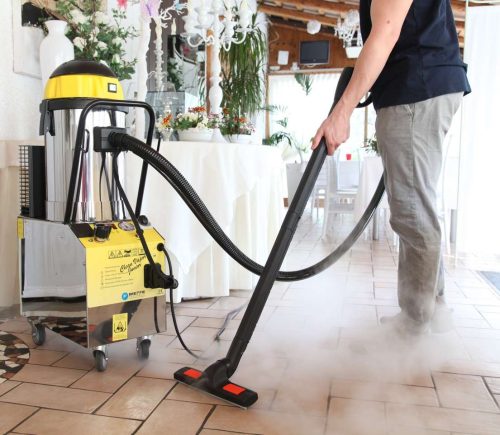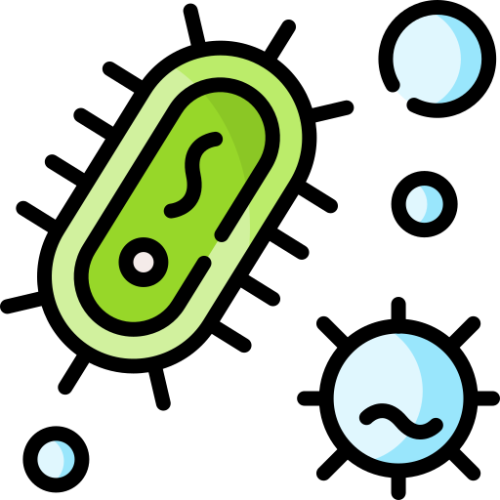Commercial & Industrial Steam Cleaners | Pure Steam Cleaners.uk
- Order Before 1pm For Free Next Working Day Machine Delivery!
- UK’s Only Self Descaling Steam Cleaners
- Order Before 1pm For Free Next Working Day Machine Delivery!
Steam vs. Chemical Disinfection

Let’s talk real cleaning, not a quick wipe with a damp cloth, but proper disinfection. And that’s where the real debate kicks off: Steam vs. Chemical Disinfection. It’s more than just personal preference; it’s a clash of two very different approaches to killing germs.
Steam uses nothing but heat and water, simple, powerful, and oddly satisfying. Chemicals come armed with complex formulas, tried-and-tested across countless industries. Both have their place, both get the job done, but which one’s right for you?
Stick around. Gloves on, kettle boiling, let’s get into it.
Check out our range of Steam Cleaners!
What Are We Even Comparing?

Before we argue about who’s king of clean, let’s define the battlefield. Cleaning is when you wipe up crumbs. Disinfection is when you actually destroy the things that make you ill. You know, the bacteria doing backflips on your chopping board, or the viruses throwing a rave on your keyboard.
Steam vs. Chemical Disinfection is not a ‘mop vs. wipe’ debate. It’s about how you remove what matters,the microbial freeloaders.
Steam Cleaning

Steam cleaners look pretty innocent at first glance, just a sleek machine with a few tubes and attachments. Harmless, right? Then you flick the switch, and suddenly it’s a pressure-powered jet of 120°C fury, blasting into every nook and cranny you didn’t even know existed.
There’s no soap, no added chemicals, no artificial lemon scent trying to convince you it’s clean. Just pure water, heated until it turns into scalding steam that breaks down grime, lifts dirt, and kills a wide range of microorganisms on contact.
This isn’t some new fad either. Steam cleaning has quietly been the unsung hero in healthcare, hospitality, and food production for years. Lately, it’s been gaining momentum as people get tired of harsh chemicals and endless plastic bottles. And honestly, if you’ve ever seen it in action, it’s strangely addictive, like watching a nature documentary where heat is the apex predator.
Chemical Disinfection

Chemical disinfectants use synthetic formulas, chlorine, alcohols, hydrogen peroxide, quats, and so on, to kill germs. They’re effective, fast-acting, and available in every format imaginable: sprays, wipes, mists, foggers, you name it.
Most are regulated, safety-tested, and carry familiar labels promising hospital-grade results. And, to their credit, they often deliver, especially if used correctly.
Surface Compatibility: Choose Your Fighter (Wisely)

Steam plays nice with sealed floors, tiles, countertops, and appliances. It’s brilliant on things like grout lines, fabric seats, and awkward little cracks where bacteria seem to set up shop like squatters. But point it at an unsealed wooden floor or delicate wallpaper, and you might regret it faster than microwaving tinfoil.
Chemicals? Well, it depends. Some are “safe on all surfaces,” and some will strip paint off a wall faster than you can say “was that the expensive sideboard?” It all comes down to reading labels and let’s be honest, no one actually enjoys doing that.
Time Trials

In the Steam vs. Chemical Disinfection race, chemicals win the sprint. Spray, wipe, next surface. It’s the cleaning equivalent of fast food, done quickly, if not always thoroughly.
Steam’s more like slow cooking. Give it a bit of time, hold it steady, and let the heat do the job properly. It won’t win a race, but it does win points for satisfaction and thoroughness. It’s like watching grime surrender on command.
Killing Power: Both Are Ruthless When You Let Them Be

Steam and chemicals both boast 99.999% kill rates on germs. That is, when used exactly as intended. Which, let’s face it, is rarer than someone replacing the loo roll without being asked.
Steam needs to reach the right temperature, and linger long enough to do its work. Chemical disinfectants need the right concentration, and more time than the five-second wipe-and-go many people give them.
Used properly, both are lethal (to germs, that is). Used poorly, both are about as effective as yelling “shoo” at a virus.
Check out our range of Steam Cleaners!
Health and Safety: One Smells Like Clean, One Is Clean

Steam produces no residue, no scent, and no irritation. Unless you point it at your hand, which we strongly advise against. It’s hot. Very hot. Like “accidentally touch a car bonnet in July” hot.
Chemical disinfectants often come with a scent best described as “clinical panic”. They may need gloves, masks, goggles, and a very good memory for what not to mix. If you’ve ever choked on your own cleaning spray, you know the feeling.
The Planet’s Perspective

Chemical disinfectants are useful, effective, and very… plastic. They often come in single-use bottles, are made in factories, and get rinsed into drains where they may or may not be good news for frogs.
Steam? Just water. Heat it, apply it, let it evaporate. No runoff, no residue, no flaming skull on the back label warning of “serious long-term damage to aquatic life”.
Long-Term Costs

Buying a steam cleaner can feel like an indulgence. But then, so did your first decent coffee machine, and look how that turned out. Once you’ve got the kit, the running costs are negligible, just water and power.
Chemical disinfectants seem cheap, until you’re restocking shelves like a supermarket, navigating expiry dates, and wondering where all the wipes went again.
Over time, steam tends to be kinder to your wallet, your nose, and your storage space.
Kitchens

Steam works beautifully in kitchens. It strips grease, kills germs, and doesn’t leave anything behind that might season your toast. It also cleans things you wouldn’t dare spray, like extractor fans, hobs, or the bottom of the bin lid.
Chemical disinfectants get the job done too, but you’ve got to rinse well or risk your food tasting faintly of hospital. Some people like that. Most don’t.
Health Settings: The Domain of Disinfectant

Hospitals love a good chemical. They’re regulated, standardised, and tick all the compliance boxes. For busy staff, a familiar spray bottle is easier to reach for than a steam unit.
That said, steam’s often used for deep cleans, especially in operating theatres and sterile environments because of its ability to sneak into microscopic spaces and sanitise without leaving anything behind. In other words, it plays a quiet but essential role.
Safe, Powerful Cleaning for Nurseries, Vets, and Care Settings

Steam vs. Chemical Disinfection comes down to priorities. Chemicals are quick and convenient but leave behind residue, strong smells, and potential health risks, less ideal for nurseries, vets, or care homes.
Steam kills germs using only heat and water, with no harsh side effects. It’s safer for sensitive spaces, better for the environment, and ideal for deep cleaning, just a bit slower and not for every surface.
Both steam and chemical disinfection do the job, they’re reliable, effective, and trusted in all kinds of settings. Chemicals are great when speed and convenience are key, especially for quick surface wipe-downs or meeting strict clinical protocols.
But if you’re after something safer, cleaner, and easier on the environment, especially in spaces with children, animals, or vulnerable individuals, steam quietly edges ahead. No harsh residues, no restocking shelves of bottles, just high-temperature vapour doing the hard work. Simple, thorough, and surprisingly satisfying.
Check out our range of Steam Cleaners!
Pure Steam Cleaners specialises in hiring and selling powerful, slef-descaling commercial and industrial dry steam cleaners. Our machines are ideal for deep cleaning in kitchen, healthcare facilities, and manufacturing plants without harsh chemicals. Hires and sells new and second-hand cleaning equipment, including industrial vacuums, floor scrubber, pressure washers, and floor polishers at Cleaning Equipment Services Ltd. We’re always available to answer any questions and provide guidance on the best cleaning methods and procedures. We’re also very patient and accommodating with explaining the operation and maintenance of the equipment.

